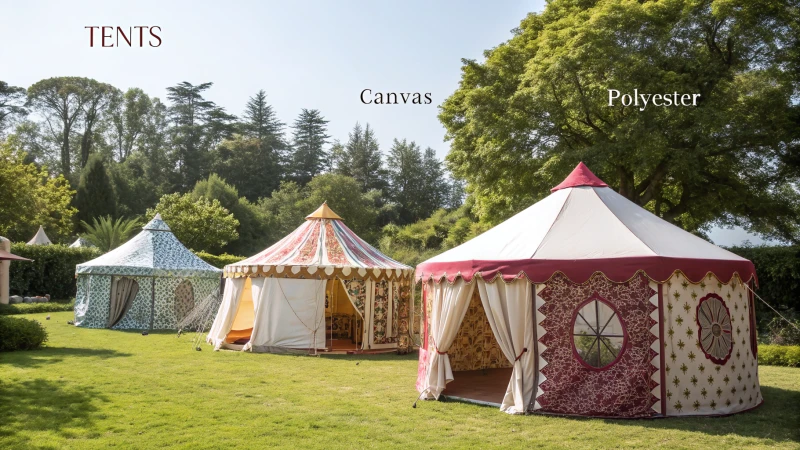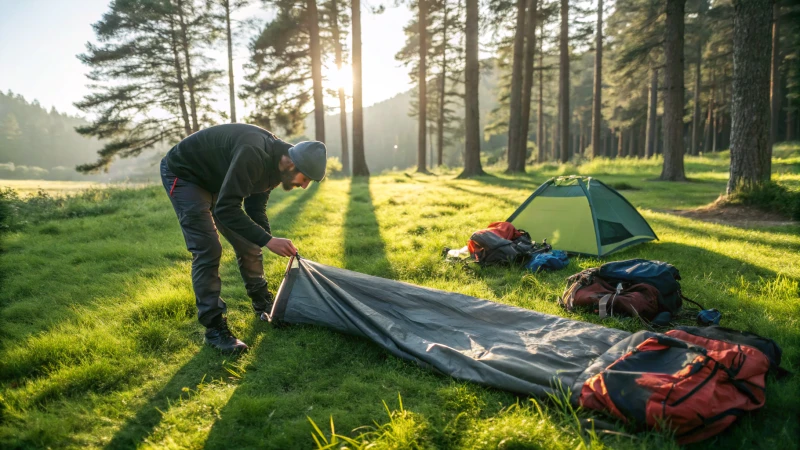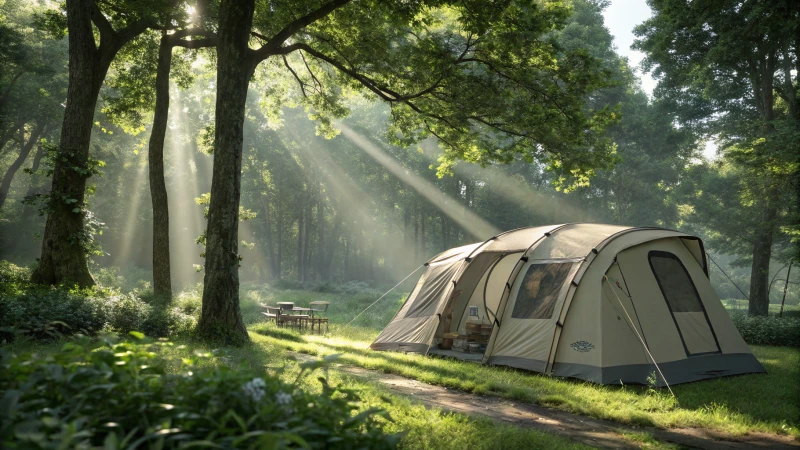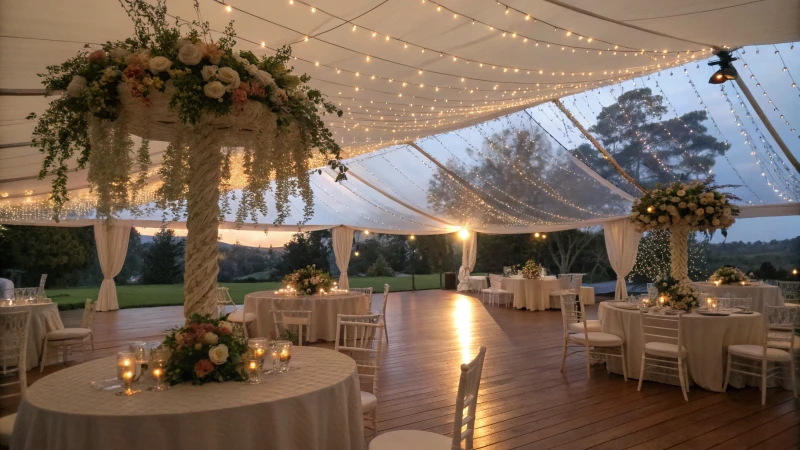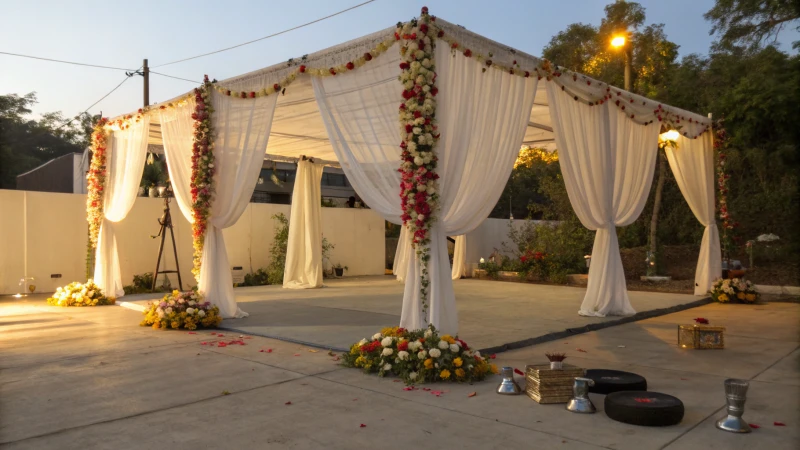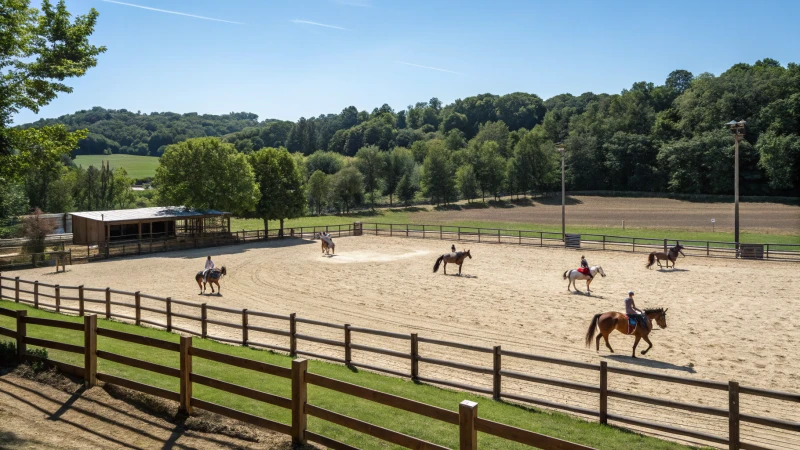
Embarking on a journey to build a horse arena can be both exciting and daunting. Let’s explore what it takes!
When building a horse arena, prioritize these seven key factors: riding discipline, size, placement, drainage, base, footing, and budget. Each element is vital for ensuring the arena meets safety and functionality while catering to equestrian needs.
I remember the first time I decided to build a horse arena; it felt like stepping into a new adventure. I had to consider so many things—from the kind of riding we were doing to ensuring our budget didn’t spiral out of control. Every decision felt personal and impactful, and understanding each factor’s nuances made all the difference.
Taking the time to delve into each component—like choosing the right footing for our horses’ health or figuring out the perfect drainage solution—became not just a necessity but also a labor of love. These choices shaped our arena into a safe, functional space that we could all enjoy.
The arena's size affects riding discipline suitability.True
Different riding disciplines require specific arena sizes for safety and functionality.
Budget is the least important factor in building an arena.False
Budget is crucial as it determines the quality of materials and construction.
How Does Riding Discipline Influence Arena Design?
Ever wondered why horse arenas look so different? It’s all about the riding discipline!
Riding discipline influences arena design by dictating size, surface, and layout needs. For example, dressage requires a firm, flat surface for precision movements, while jumping needs ample space and a forgiving surface to support safe landings.
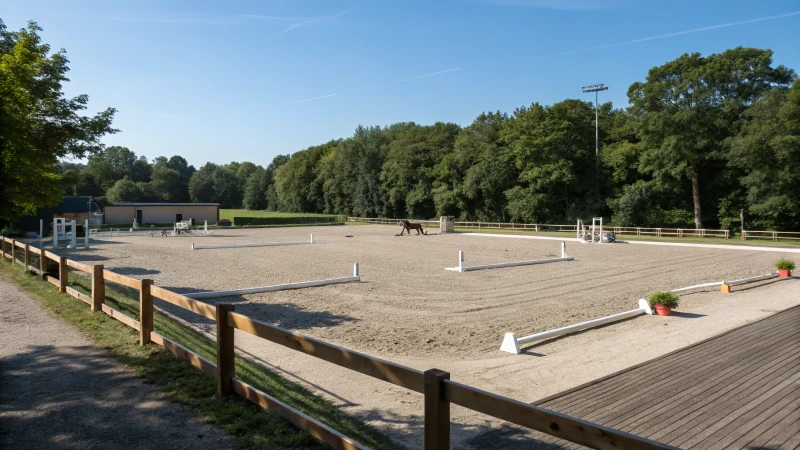
Understanding Different Riding Disciplines
When I first got into designing horse arenas, I never realized how much the specific discipline would influence every detail. Each riding discipline1 has its own set of requirements, shaping the arena’s size, surface, and layout. It’s fascinating to see how these factors come together to ensure both safety and peak performance.
| Discipline | Key Requirements |
|---|---|
| Dressage | Firm, consistent surface; standard size 20m x 60m |
| Jumping | Larger dimensions for approach and landing areas; forgiving yet firm surface |
| General Use | Flexible design; accommodates multiple riders; recommended size 20m x 40m to 30m x 60m |
Dressage Arena Design
I recall visiting a dressage arena for the first time—it was a revelation. Dressage demands precision, so the arena needs a firm surface that allows for those controlled movements. The standard size is usually 20m x 60m, ensuring that riders have enough space for their intricate routines. A suitable surface2 is crucial here to prevent injuries, offering just the right balance between firmness and cushioning.
Jumping Arena Design
Jumping arenas are another story altogether. They require vast spaces due to the need for approach, jump, and landing areas. Typically, these arenas measure between 4000 to 6000 sqm. The surface must be forgiving yet firm to protect both horse and rider during jumps. The layout is flexible, often featuring various jumps that test the skill and agility of the pair.
General Purpose Arenas
For those who love a bit of everything—like me—a general-purpose arena is perfect. It’s versatile enough to accommodate multiple disciplines and riders. Sizes range from 20m x 40m to 30m x 60m, providing ample room for different activities without compromising safety or comfort.
Surface Materials and Layout
Choosing the right surface material is an art in itself and varies with each discipline. Dressage arenas might require different footing compared to jumping or general use arenas. Common materials like sand, rubber, and geotextiles each bring unique benefits depending on the discipline.
- Sand: Offers good traction but varies greatly; expert consultation is advised.
- Rubber/Geotextiles: Enhance surface stability and moisture retention, reducing dust.
Layout also plays a crucial role. In jumping arenas, strategically arranging jumps is essential, whereas dressage focuses on maximizing space for precise movements.
Environmental Considerations
Another lesson I learned early on is the importance of environmental factors like drainage and topography in arena design. A well-planned drainage system can prevent waterlogging which could otherwise ruin both performance and safety. Accessibility is key too—arenas should be close to necessary facilities like water sources and storage for horse care equipment.
Understanding how different riding disciplines3 influence arena design is crucial. It’s not just about creating a space—it’s about crafting an environment where horses and riders can thrive.
Dressage arenas must be 20m x 60m.True
Dressage requires a standard arena size of 20m x 60m for precision.
Jumping arenas are smaller than dressage arenas.False
Jumping arenas are larger due to space needed for jumps and landings.
What Are the Pros and Cons of Indoor vs Outdoor Arenas?
Have you ever wondered whether indoor or outdoor arenas would be the best fit for your events?
Indoor arenas offer reliable weather protection and year-round usability but can be expensive to build and maintain. Outdoor arenas provide a natural setting and lower initial costs but are vulnerable to weather disruptions.
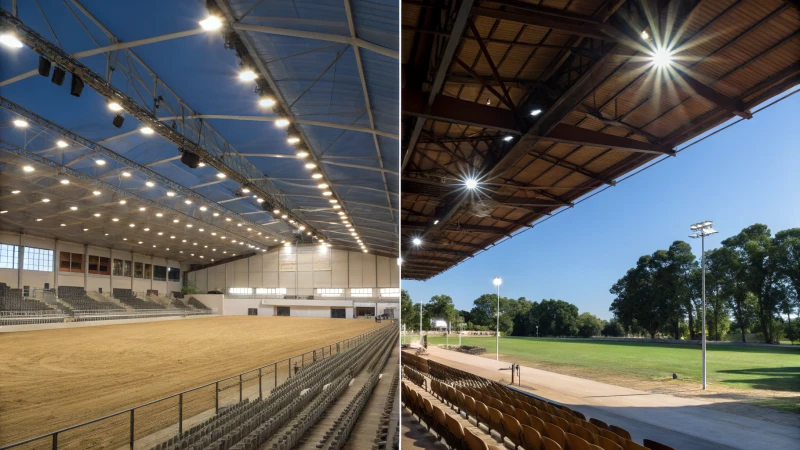
Understanding the Basic Differences
Ah, the classic debate—indoor versus outdoor arenas. It’s a decision that can make or break an event, trust me. I’ve had my fair share of experiences navigating this choice. Indoor arenas are like a warm, safe cocoon, shielding you from Mother Nature’s whims. Imagine planning an event and knowing it will happen rain or shine; that’s the peace of mind indoor venues provide. You can also control the ambiance with precise lighting and sound settings, enhancing the event experience4. But let’s not sugarcoat it—they can cost a pretty penny due to all the structural and climate control necessities.
On the flip side, outdoor arenas have this unbeatable charm. I remember organizing a concert under a starlit sky; the natural ambiance was nothing short of magical. These venues tend to be easier on the wallet initially since they don’t require as much infrastructure. Yet, they’re at the mercy of the weather gods—any hint of rain or gusty winds could throw a wrench in your plans.
Pros of Indoor Arenas
| Advantages | Details |
|---|---|
| Weather Control | Operates regardless of external conditions, ensuring event reliability. |
| Acoustic Management | Better sound management for concerts and performances. |
| Customizability | Ability to tailor the interior to specific event needs with decorations. |
Cons of Indoor Arenas
| Disadvantages | Details |
|---|---|
| Higher Costs | More expensive construction and ongoing maintenance. |
| Limited Natural Light | Reliance on artificial lighting can increase energy costs. |
| Space Restrictions | Potential limitations on size and height due to structural constraints. |
Pros of Outdoor Arenas
| Advantages | Details |
|---|---|
| Natural Ambiance | Offers a scenic backdrop, enhancing the overall aesthetic appeal. |
| Cost-Effective | Generally cheaper to build with less infrastructure required. |
| Flexibility | Easier to accommodate large crowds with open spaces. |
Cons of Outdoor Arenas
| Disadvantages | Details |
|---|---|
| Weather Dependent | Events are at risk of cancellation due to adverse weather conditions. |
| Sound Dispersal | Difficulty in managing acoustics in an open environment. |
| Permitting Challenges | May face stricter regulations regarding noise and environmental impact. |
In my experience, both types of arenas have their unique hurdles and perks. When choosing, it’s crucial to weigh your event’s specific needs, local weather patterns, and financial limits. By understanding these elements, you can make a more informed decision between an indoor or outdoor venue5.
Indoor arenas offer better weather control than outdoor arenas.True
Indoor arenas operate regardless of weather, ensuring event reliability.
Outdoor arenas are more expensive to maintain than indoor arenas.False
Outdoor arenas generally have lower maintenance costs due to less infrastructure.
Why Is Proper Drainage Crucial for Horse Arenas?
Ever slipped on a rainy day and thought, "What if my horse arena were like this?" Let’s dive into why keeping it dry is crucial.
Proper drainage in horse arenas prevents water from pooling, creating a safe, non-slip surface for horses and riders. It also protects the arena’s surface, extending its lifespan and cutting down on maintenance costs.
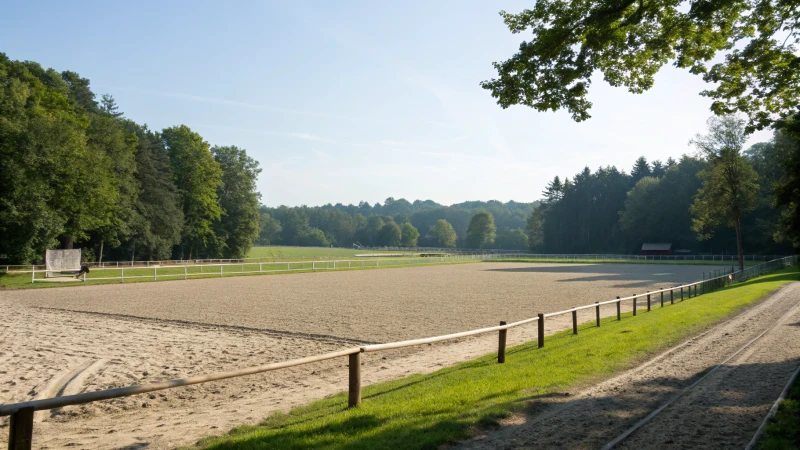
The Importance of Drainage in Maintaining Safety
I remember the first time I realized how critical proper drainage was. It had rained the night before a big riding event, and the arena turned into a muddy mess. Watching horses and riders struggle to keep their footing was a wake-up call. That experience taught me that without proper drainage, rainwater or melting snow can accumulate, creating slippery surfaces that pose significant risks to both horses and riders. A well-drained arena keeps the surface stable6 and minimizes accidents caused by slips or falls.
Impact on Arena Longevity and Maintenance Costs
If you’ve ever had to repair an arena due to water damage, you know it’s not just about the immediate cost—it’s about the long-term investment in your facility. Arenas with poor drainage suffer from surface damage over time as water pooling leads to the breakdown of base materials, resulting in an uneven surface. This not only ramps up maintenance costs but also shortens the arena’s lifespan. By investing in an effective drainage system, you maintain a consistent surface quality, saving both time and money.
| Drainage Components | Function |
|---|---|
| Graded Slopes | Directs water away from the arena |
| Permeable Surfaces | Allows water to pass through |
| Drainage Ditches | Collects and diverts water |
Choosing the Right Base Materials
Choosing the right base materials is like picking the perfect pair of shoes; it can make or break your experience. A free-draining base, like compacted gravel or crushed rock, enhances water flow and reduces puddles. When selecting materials, consider local climate conditions7 and arena usage to ensure durability and effectiveness.
Considerations for Arena Design
I’ve seen it first-hand: incorporating natural slopes or designing artificial grades during construction can vastly improve drainage. Installing a drainage layer beneath the surface materials allows water to filter away efficiently. Getting insights from experts can help tailor customized drainage solutions8 to meet specific needs.
Proper drainage isn’t just about convenience; it’s vital for crafting a safe, efficient riding environment that supports both horse health and rider performance. Whether you’re building a new arena or maintaining an existing one, paying attention to drainage can make all the difference in creating a space that’s both functional and enjoyable.
Proper drainage prevents slippery surfaces in horse arenas.True
Drainage prevents water accumulation, reducing slip risks for horses.
Poor drainage reduces maintenance costs for horse arenas.False
Poor drainage increases maintenance due to surface damage and unevenness.
How Can You Balance Quality and Budget in Arena Construction?
Building an equestrian arena? I’ve been there, balancing dreams of a perfect arena with the reality of budget constraints. Let’s explore how to create your dream space without breaking the bank.
Balancing quality and budget in arena construction hinges on strategic planning regarding location, materials, and design. Opting for cost-effective materials and seeking expert consultation can lead to a functional, durable arena without overspending.

Understand Your Needs
Before diving into construction, I learned the importance of defining my arena’s purpose. Whether it’s dressage9, jumping, or general riding, each discipline demands specific sizes and materials.
| Discipline | Typical Arena Size |
|---|---|
| Dressage | 20m x 60m |
| Jumping | 4000 – 6000 sqm |
| General Riding | 20m x 40m to 30m x 60m |
Understanding these needs upfront can save a lot of headaches later.
Choose Materials Wisely
I remember being overwhelmed by the choices of materials. Eventually, I found that a compacted base10 offers great stability, while selecting an arena sand that provides the right balance between cushioning and traction is crucial. Adding rubber and geotextiles can boost safety and cut down on maintenance costs—something I appreciated after the first muddy season!
Strategic Placement and Design
Picking the right location was another learning curve for me. A naturally flat terrain not only saved me money on excavation but also simplified drainage issues. Proper design also ensured effective drainage11, keeping my arena functional even after heavy rains.
- Accessibility: Ensuring easy access for horses, riders, and spectators made daily operations smoother.
- Proximity: Being near essential facilities like water and storage reduced operational hassles significantly.
Professional Consultation
I can’t stress enough how valuable expert advice was during my project. Professionals provided insights that helped me strike the perfect balance between quality and cost, steering me clear of potential pitfalls I hadn’t even considered.
Budget Planning
Creating a detailed budget was vital. By investing in high-quality materials from the start, I managed to lower long-term costs through minimized repairs—a strategy that paid off over time.
Cost-effective Strategies
- Phased Construction: Budget constraints led me to adopt a phased approach, which allowed me to manage expenses more effectively.
- Bulk Purchasing: Buying materials in bulk provided discounts, helping me maintain quality without overshooting my budget.
By analyzing each aspect carefully—from materials to professional advice—I ensured my arena met all my needs without financial strain. Implementing these strategies maintained a delicate balance between quality and financial considerations, turning my vision into reality.
Dressage arenas require a 20m x 60m size.True
Dressage arenas are typically sized at 20 meters by 60 meters.
Rubber and geotextiles increase maintenance costs.False
Rubber and geotextiles reduce maintenance costs by enhancing safety.
Conclusion
Building a horse arena involves seven key factors: riding discipline, size, placement, drainage, base materials, footing, and budget to ensure safety and functionality for horses and riders.
-
Explore different equestrian disciplines to understand their unique requirements and how they influence arena design. ↩
-
Discover optimal surface materials for dressage arenas to enhance performance and ensure safety. ↩
-
Learn how specific riding disciplines shape the layout of equestrian arenas. ↩
-
Explore how controlled environments enhance event experiences by offering consistent conditions. ↩
-
Learn about the benefits of hosting events in natural settings, including ambiance and flexibility. ↩
-
Ensuring a stable surface is crucial for safety; this link offers maintenance tips to achieve that. ↩
-
Learn about suitable base materials for varying climates to improve arena durability. ↩
-
Discover tailored drainage solutions that fit specific arena designs and requirements. ↩
-
Understand the spatial and design requirements specific to dressage to inform your arena’s layout. ↩
-
Discover economical base material options that maintain safety and durability. ↩
-
Find methods to implement efficient drainage systems that prevent waterlogging. ↩


